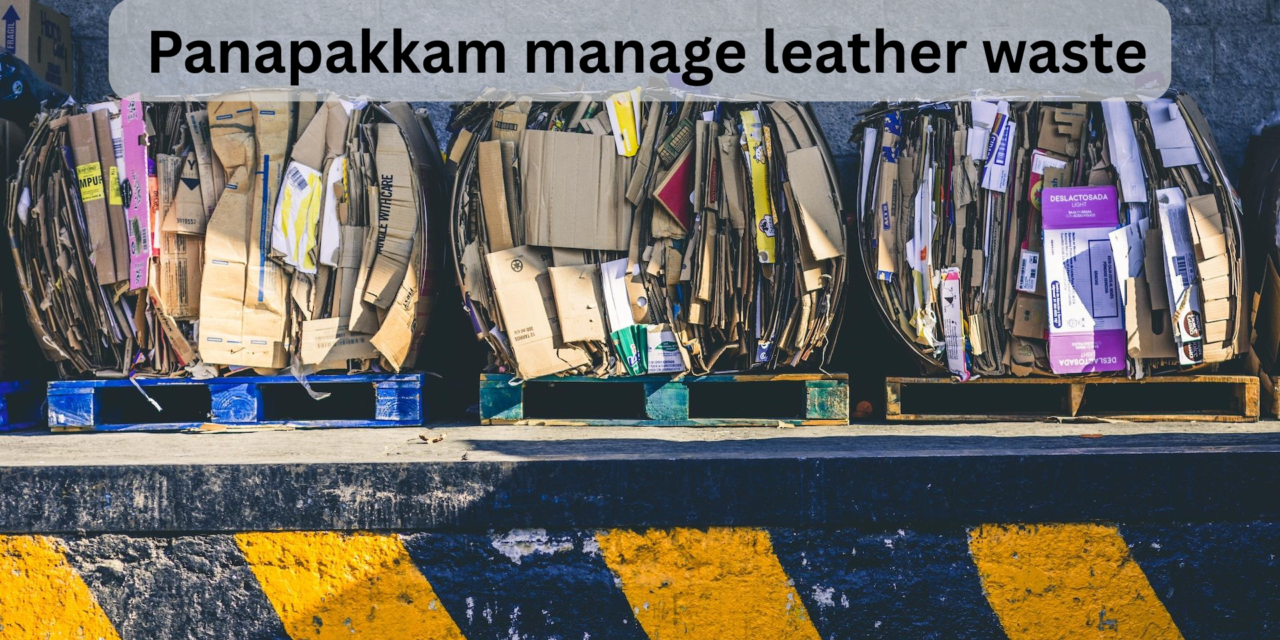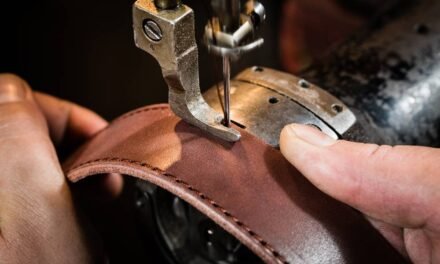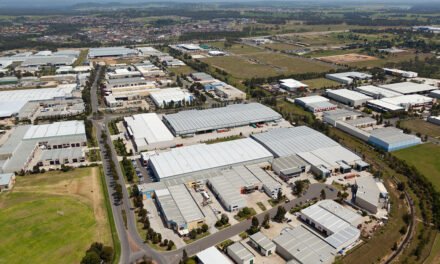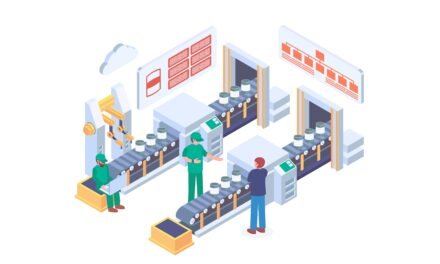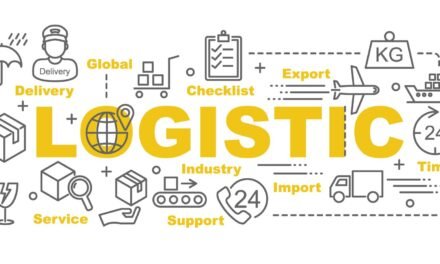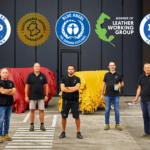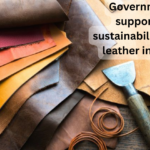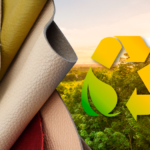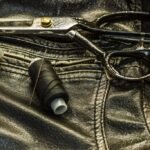Panapakkam, as a significant hub in Tamil Nadu’s leather industry, has developed several mechanisms to manage leather waste, focusing on both reducing and recycling waste generated from leather production. Leather manufacturing processes, especially tanning and finishing, produce various types of waste, including solid waste, liquid effluents, and gaseous emissions. To mitigate the environmental impact, Panapakkam implements a combination of government regulations, industry practices, and innovative technologies for waste management.
1. Effluent Treatment and Water Recycling
- Centralized Effluent Treatment Plants (ETPs):
In the MLFAC Industrial Park and other industrial estates, leather units are required to install centralized effluent treatment plants (ETPs) to treat the large volumes of wastewater produced during the leather tanning and finishing processes. These plants treat water by removing harmful chemicals, dyes, and heavy metals before it is discharged.- Recycling of Water: The treated water is often recycled and reused in production processes, reducing the overall consumption of water.
- Sludge Management: The sludge generated in ETPs is carefully disposed of or used in composting and other recycling activities.
2. Solid Waste Management
- Leather Scrap and Offcuts:
Leather manufacturing units generate substantial amounts of leather scraps, offcuts, and trimmings during production. Panapakkam’s leather industry has adopted several methods to manage these materials:- Recycling into New Products: Some leather scraps are reused for manufacturing smaller leather products, such as wallets, belts, and accessories.
- Waste-to-Energy Conversion: Some units collaborate with specialized agencies to convert leather waste into energy through incineration or other waste-to-energy processes.
- Composting: Leather waste, particularly in its raw form, can also be used in biodegradable composting when treated appropriately.
3. Hazardous Waste Disposal
- Toxic Chemicals and Chromium Waste:
The use of chromium salts and other toxic chemicals in the tanning process results in hazardous waste that must be carefully managed.- Chromium Recovery: In many units, waste containing chromium is treated to recover the metal and minimize its environmental impact. This process reduces pollution and ensures compliance with environmental regulations.
- Safe Disposal of Hazardous Waste: Hazardous waste is either neutralized, disposed of in secure landfills, or sent to certified disposal facilities that specialize in the safe handling of industrial waste.
4. Air Pollution Control
- Emission Reduction Technologies:
Leather processing involves the use of various chemicals that can release harmful emissions and odors into the air. To manage this, the government and industry have implemented systems to control emissions:- Air Scrubbers and Filters: These are installed in manufacturing units to capture and filter harmful gases such as volatile organic compounds (VOCs) and ammonia.
- Odor Control: Specialized systems are used to minimize the smell of chemicals used in tanning, ensuring compliance with air quality standards.
5. By-products Utilization
- Use of Leather Waste in Other Industries:
Leather waste, especially from animal hides and offcuts, is utilized in other industries like:- Leather Board Production: Leather scrap is often processed into leather boards, which are used in various applications, including furniture manufacturing and automobile interiors.
- Gelatin and Collagen Production: Some leather scraps, particularly from tanning, can be processed into gelatin and collagen, which are used in food, pharmaceuticals, and cosmetics.
6. Eco-friendly Leather Manufacturing Practices
- Chrome-Free Tanning:
Traditional tanning methods using chromium can lead to significant waste generation, including toxic sludge. Many leather manufacturers in Panapakkam have shifted towards chrome-free tanning methods, using vegetable tanning or other alternative methods that are less harmful to the environment and produce less toxic waste. - Sustainable Tanning Agents: Manufacturers increasingly use biodegradable tanning agents and natural dyes, reducing the environmental footprint of leather production.
7. Government and Industry Regulations
- Regulatory Compliance:
The Tamil Nadu Pollution Control Board (TNPCB) and the Central Pollution Control Board (CPCB) impose strict regulations on leather waste disposal. Leather manufacturing units must meet effluent standards, solid waste management protocols, and air quality guidelines to operate.- Environmental Audits: Leather units are periodically audited to ensure compliance with these regulations, and penalties are imposed on non-compliant units.
- Incentives for Green Practices:
The government provides financial incentives and subsidies to units that adopt eco-friendly practices, such as investing in waste treatment technologies, water recycling systems, and alternative tanning techniques.
8. Community and Public Awareness
- Training and Awareness Programs:
Government and industry bodies organize awareness programs and training workshops for leather workers and manufacturers, educating them on best practices in waste management and sustainable production processes. - Collaboration with NGOs and Research Institutes:
Environmental organizations and research institutes often collaborate with local leather manufacturers to promote sustainable waste management practices and introduce innovative solutions for recycling and waste minimization.
Conclusion
Panapakkam’s leather industry manages waste through a multi-faceted approach that includes treatment of effluents, recycling of solid waste, and the adoption of green technologies. The implementation of centralized effluent treatment, the promotion of chrome-free tanning, and the safe disposal of hazardous materials are essential aspects of Panapakkam’s commitment to managing leather waste in an environmentally responsible way. By adhering to both government regulations and industry best practices, the region aims to minimize the environmental impact of its leather production while maintaining its position as a global leader in the industry.
Hashtags
#PanapakkamLeatherWasteManagement #MLFACEnvironmentalPractices #SustainableLeatherProduction #EcoFriendlyTanning #WasteToValue #CircularEconomyInLeather #TamilNaduLeatherIndustry #GreenManufacturing #EnvironmentalCompliance #LeatherSectorSustainability

